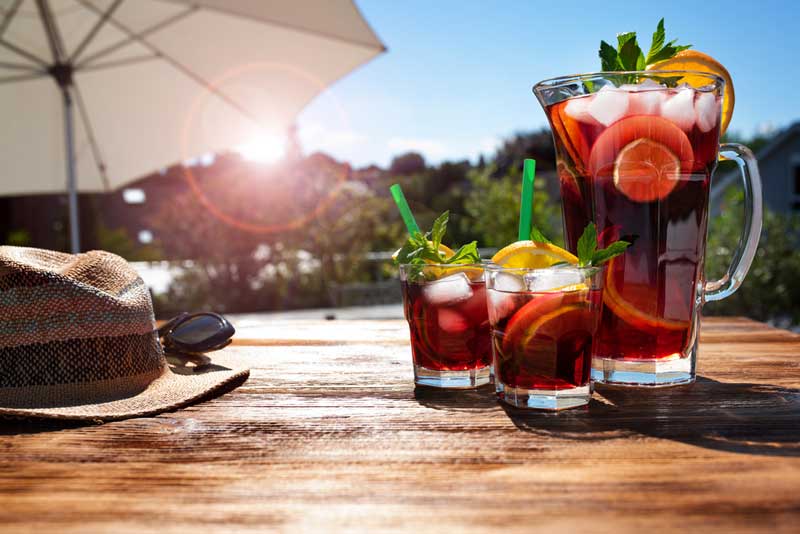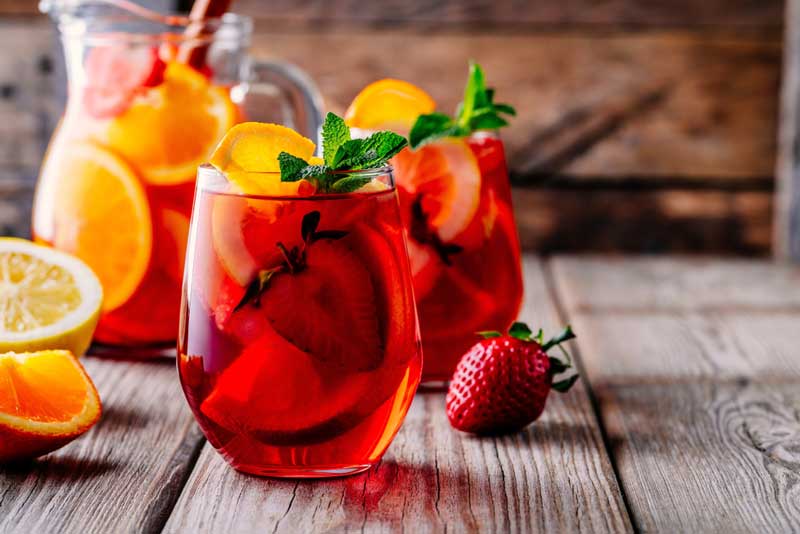Want to know how long Sangria last? If yes, then you are in the right article.
Sangria, with its vibrant hues and symphony of flavors, is a beloved beverage that graces tables and gatherings with its festive charm.
As we delve into the world of this Spanish delight, an inevitable question arises: How long does sangria last? While this concoction of wine, fruits, and assorted flavors is a delightful experience for the palate, its lifespan is a matter of consideration for those who wish to savor its essence beyond the initial pour.
In this exploration, we unravel the secrets behind the longevity of sangria, understanding its nuances and offering insights into the factors that influence its shelf life.
Join us on this journey as we decipher the lifespan of sangria and discover the art of preserving its refreshing allure.
What Is Sangria?
Sangria, the delightful Spanish concoction, has taken the world by storm with its refreshing and fruity appeal. Originating from Spain, this vibrant drink is a perfect blend of red wine, assorted fruits, sweeteners, and often a splash of brandy or liqueur. The name “sangria” is derived from the Spanish word “sangre,” meaning blood, which aptly describes the rich red hue of the wine used as its base.
This traditional beverage is not just a drink; it’s a celebration in a glass. Sangria offers a delightful medley of flavors, combining the sweetness of fruits with the depth of red wine, creating a refreshing and versatile beverage that is perfect for any occasion. The classic recipe includes red wine, oranges, lemons, and sometimes peaches or berries. It’s often sweetened with sugar, honey, or fruit juices, and some recipes even call for a bit of soda water for effervescence.
Also Read: How Long Do Refried Beans Last in the Fridge? and Can You Freeze Egg Salad? (Everything To Know)
How Long Does Sangria Last?
Sangria is best enjoyed fresh, as the flavors of the fruits and wine meld together to create a harmonious and vibrant taste. When stored properly, an opened bottle of sangria can last in the refrigerator for about 3-5 days. However, its flavor profile may start to change after the first day, as the fruits continue to release their juices into the mixture.
The key to preserving the freshness of sangria lies in refrigeration. The cold temperature helps slow down the oxidation process of the wine and preserves the integrity of the fruits. If you’ve made a large batch for a gathering and have leftovers, consider transferring the sangria into an airtight container before storing it in the refrigerator.
How to Tell if Sangria Has Gone Bad
While sangria is generally a resilient drink, there are signs to look out for to determine if it has gone bad. The most apparent indicator is a significant change in color. If the vibrant red hue has dulled or if you notice a brownish tint, it’s a clear sign that the sangria has oxidized, and its quality may have deteriorated.
Another telltale sign is an off-putting odor. If the sangria smells sour, vinegary, or has an unpleasant aroma, it’s a strong indication that it has spoiled. The fruits in the sangria can also provide clues; if they appear mushy, discolored, or have an off texture, it’s likely that the sangria is no longer fit for consumption.
Always use your senses as a guide – if something seems off, it’s better to err on the side of caution and discard the sangria.
Can You Freeze Sangria?
Freezing sangria can be a practical solution if you find yourself with leftover batches that you want to preserve for later enjoyment. However, it’s important to note that the freezing process can alter the texture and flavor of the fruits in the sangria. While the wine itself is less affected by freezing, the fruits may become mushy and lose their original texture.
How to Freeze Sangria

Freezing sangria requires some preparation to maintain its quality. Here’s a step-by-step guide:
- Choose the Right Container: Opt for a container with an airtight seal to prevent freezer burn and preserve the flavors. Consider using individual serving-sized containers for convenience.
- Leave Room for Expansion: Liquids expand when frozen, so make sure to leave some space at the top of the container to accommodate this expansion without causing the container to crack.
- Label the Container: Clearly label the container with the date of preparation to keep track of its freshness.
- Freeze Quickly: Place the sangria in the freezer and try to freeze it as quickly as possible. A slower freezing process can lead to the formation of larger ice crystals, potentially affecting the texture of the fruits.
- Thawing Process: When ready to enjoy the frozen sangria, transfer it to the refrigerator and let it thaw slowly. Avoid using a microwave or hot water, as rapid thawing can compromise the quality of the drink.
While freezing sangria is an option, it’s essential to acknowledge that the texture of the fruits may change, and the overall taste might differ from the freshly made version. Frozen sangria is best enjoyed as a slushy treat or as a base for creative cocktails.
Frequently Asked Questions – How Long Does Sangria Last?
Can I Use White Wine To Make Sangria?
Absolutely! While red wine is traditional, white sangria is equally popular. White sangria is typically made with white wine, a variety of fruits such as peaches, melons, and citrus, and may include ingredients like peach schnapps or elderflower liqueur for added flavor.
Can I Make Sangria With Sparkling Wine?
Yes, you can! Sparkling wine adds a delightful effervescence to sangria. Choose a dry sparkling wine to balance the sweetness of the fruits and other ingredients.
Can I Use Frozen Fruits in Sangria?
Yes, frozen fruits can be a convenient option, especially if fresh fruits are not readily available. Frozen fruits can also act as natural ice cubes, keeping your sangria chilled without diluting the flavors.
Is It Necessary To Add Brandy or Liqueur to Sangria?
No, it’s not necessary, but it can add depth and complexity to the flavor. The choice of brandy or liqueur depends on personal preference. Some popular choices include orange liqueur, peach schnapps, or a splash of rum.
Can I Make Non-alcoholic Sangria?
Absolutely! Non-alcoholic sangria, often referred to as “sangria mocktail” or “virgin sangria,” can be made by substituting the wine with grape juice or a non-alcoholic sparkling beverage. The fruits and other ingredients can remain the same for a refreshing non-alcoholic version.
Also Checkout: Can You Freeze Half and Half? (Everything to Know) and Can You Freeze Pulled Pork? (Everything to Know)

